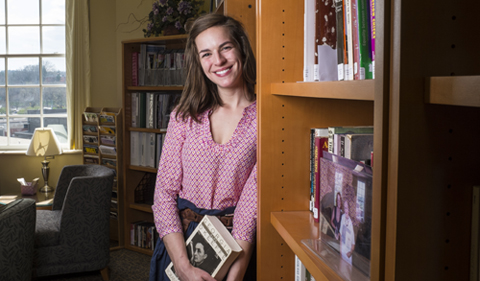By Chris Caldwell
Ohio University alum Emily Burns ’13, a Women’s and Gender Studies major, is a high speed rail proponent who has focused her educational and feminist pursuits on exploring the intersection of social mobility and public transportation.
Just as the concepts covered in her introductory WGSS courses resonated with her personally, Burns is now applying them to her Master of Public Administration work, where she continually sees new intersections between public transportation and feminist theory.
She notes that a person’s capacity to get to a job directly impacts whether that individual will be able to break socioeconomic barriers.
“I grew up in a small town in north east Ohio. If you didn’t have a car it was really difficult to find a well-paying job,” says Burns. Even for individuals who live in urban areas, without buses or trollies, let alone bike paths or sidewalks, mobility (both physical and social) is all but impossible.
Empowered and Supported by WGSS Program
Burns says that the WGSS program provided her with the necessary tools to see these layers of social constraint and empowered her to do something about it.
In the spring of her senior year, Burns returned from a month-long study abroad trip in India. Her mission was to perform some firsthand research on sex workers and human trafficking.
“I was really culture shocked. I had to come to terms with my research, and I had to navigate two different worlds while struggling with my white, privileged, developed-world-woman existence,” says Burns. Additionally, her father passed away suddenly upon her return to the United States. Without having a clear notion of what she wanted to do, or where she wanted to go, Burns turned her attention heavily toward her studies and received support from various WGSS faculty members.
“I grew more in that 15-week period than I have ever grown before,” Burns says. Dr. Patricia Stokes challenged Burns to look at the world in a completely different way. Through the tutelage of Stokes, and other faculty, Burns was able to see the vast connectedness of social systems, not merely abroad but also domestically. It was because of this shift in consciousness that she decided to undertake a Master of Public Administration degree.
Pursuing a Master of Public Administration
“The first year of grad school was very different,” says Burns, noting that everything from the format of the courses to the subject matter of the reading material changed. However, despite taking courses that previously would have daunted her, Burns says that even her courses in advanced mathematics are manageable.
While pursuing her undergraduate degree, Burns was able to look critically at herself and the world in which she lived. “You can speak, and write, and think critically by taking humanities and social science courses,” she says. “Take the tools that you get from a WGSS degree and apply them to other things.”
Burns saw a need for well-trained physical science practitioners who have the skills of introspection and critical thinking, hence her desire to go into Public Administration. She is currently a major proponent of public transit and high speed rail.
Burns says feminist theories can apply to anything. “There are few degrees that will allow you to apply one thing to some many different things.”





















Comments